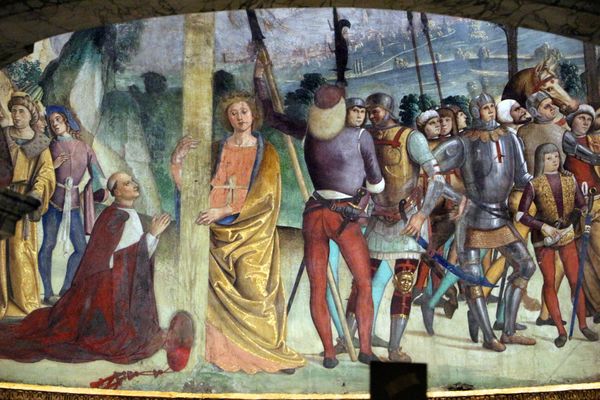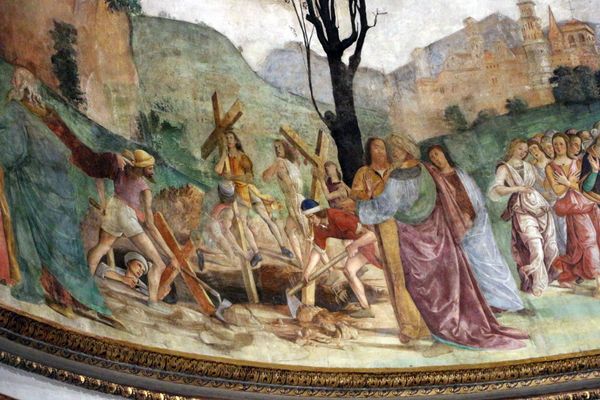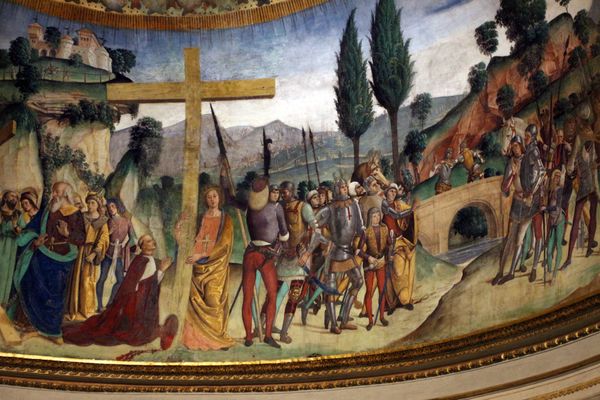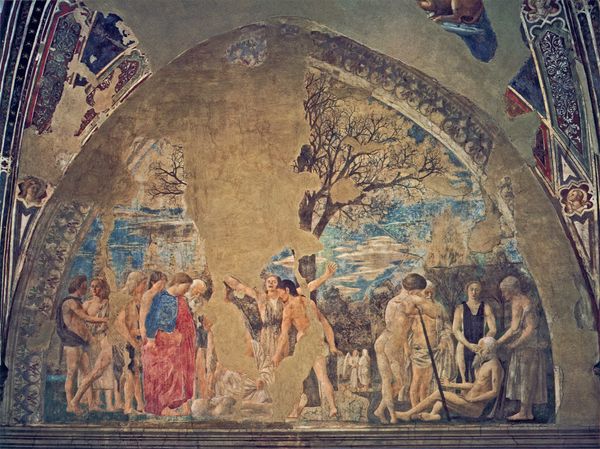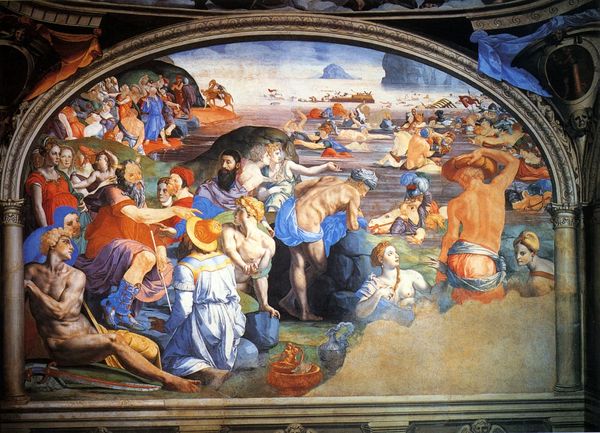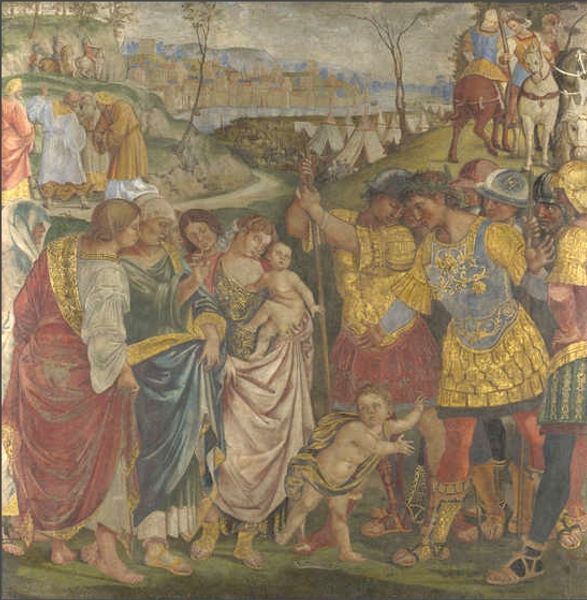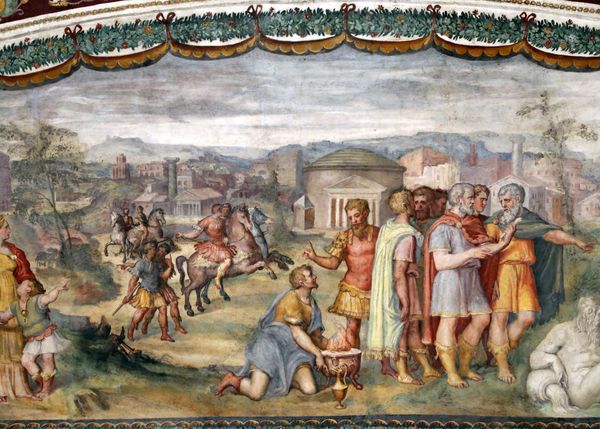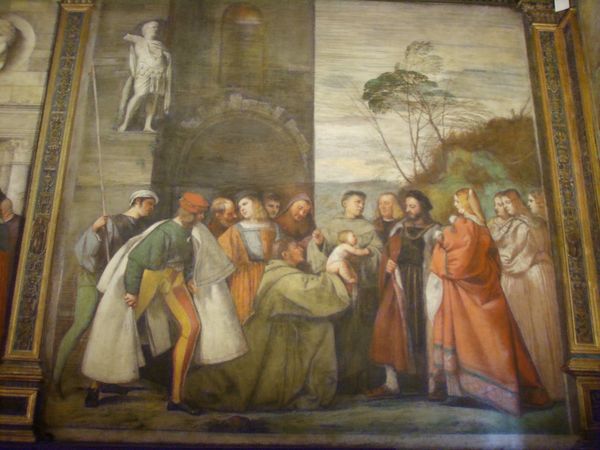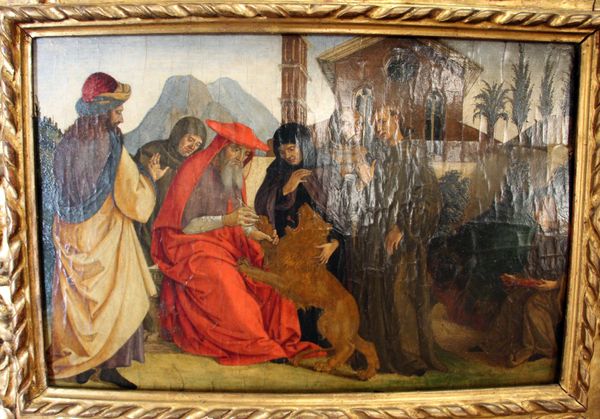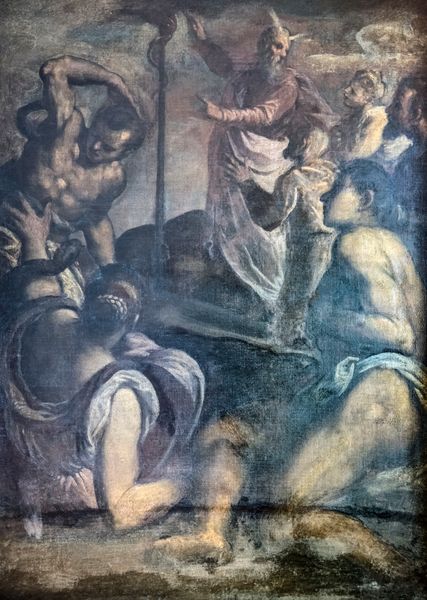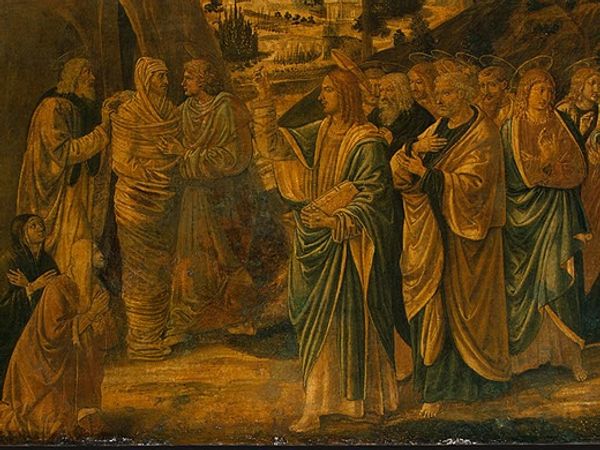
painting, fresco
#
narrative-art
#
painting
#
figuration
#
fresco
#
oil painting
#
history-painting
#
italian-renaissance
Copyright: Public domain
Curator: Standing before us is Antoniazzo Romano’s fresco, "Stories of the Holy Cross," completed around 1492. What are your immediate thoughts? Editor: It strikes me as a carefully constructed composition, almost architectural in its arrangement of figures and objects. There is an appealing sense of depth and classical idealism in its depiction of the human figure. Curator: Absolutely. The fresco, naturally, would have been made using pigments available in Rome at the time, mixed with water and applied directly to wet plaster. The act of creation itself was physically demanding labor. We see a direct relationship between labor, religious production, and even class. Editor: You bring up a compelling point. However, look at the use of color – the ochres, the blues. Consider how Antoniazzo creates depth and visual interest simply by overlapping shapes and shifting their hues. The story seems secondary to the execution of the classical artistic vision. Curator: I understand your focus on form and aesthetics, but it’s essential to look beyond that. Consider the historical context: the Renaissance in Italy was largely shaped by the rediscovery of classical ideals. However, it's crucial to discuss patronage networks. We'd also need to acknowledge that art production occurred mostly for a small, elite demographic. Editor: A fair point. Let's discuss the symbolism here. Can we say that the crosses carried by laborers represent death but hope? Perhaps their crude formation also speaks to the strength of labor. Curator: It very well could be that the wooden cross serves not only as a marker of martyrdom, but also a marker of the socio-economic and class-based history of artmaking in early Renaissance Rome. Editor: That interweaving of narrative and artistic elements makes it a fascinating example of its time, and your emphasis on production shifts the perception completely. Curator: Agreed. It challenges our traditional notions and understandings around what Renaissance art means to us, its creators, and its benefactors.
Comments
No comments
Be the first to comment and join the conversation on the ultimate creative platform.
